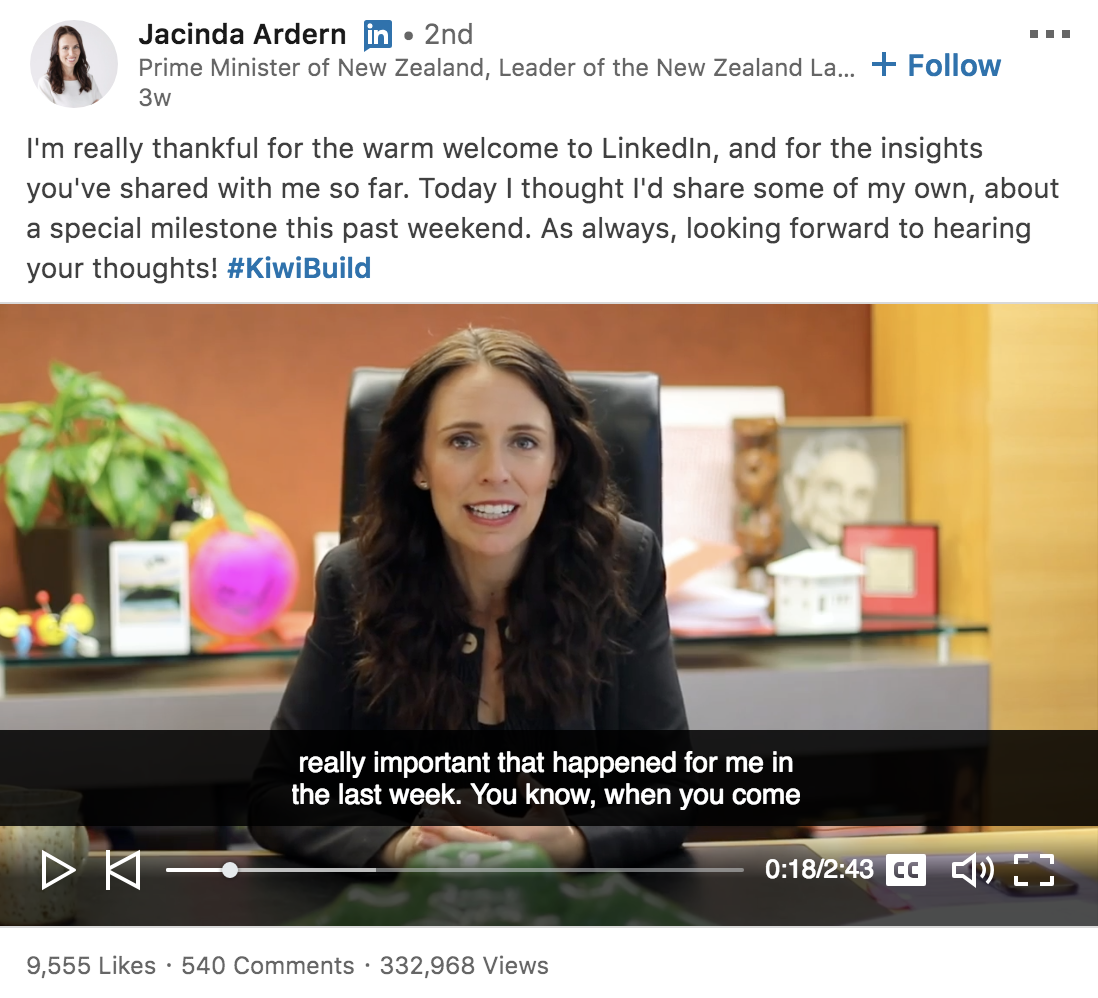Published – 15 March 2020 By Nicki Marks, Gavin Beever
This post explores the trends with social media and presents some tips on how to best engage with a target audience, to achieve the communication outcomes your extension program or project is looking for. This article has come from a Webinar conducted for the extensionAUS program by Nicki Marks from the Food Innovation Network. Who participated in an RMIT short course on social media.
Firstly, it covered what has changed with social media.
What has changed with Social Media?
We’ve moved from a business to business or a business to consumer approach to “Human to Human” engagement.
That is, making people feel like you are personally talking to them. That they feel that connection.
Here is an example of the New Zealand Prime Minister, Jacinda Ardern, on LinkedIn, talking directly to camera and doing that “Human to Human” connection approach:
Human to Human (H2H)
In Human to Human (H2H) they talk about six different elements:
- Engagement – Know your target market and what they want
- Quality – Quality is more important than quantity
- Omnichannel – Use many different ways to communicate with people: Email, social media, video, webinars – that is, go to where the target market is
- Community – Make people feel good about themselves; part of something worthwhile and exciting
- Story telling – With H2H marketing, it’s about creating a compelling narrative, a story that people will actually care about
- Trusted Advisor – Be creative about how you provide your content: e-books, white papers, webinars, blogs, etc
Contagious Content
Jonah Berger is a professor in marketing at the University of Pennsylvania’s Wharton School. He has studied what drives things to catch on. He is the author of the bestselling books; Contagious: Why Things Catch On which discusses six key drivers that help shape what people will talk about and share and Invisible Influence: The Hidden Forces that Shape Behaviour.
Contagious Content – Why things catch on!
The six key drivers identified by Jonah Berger are listed under the acronym STEPPS:
- Social Currency – make people feel like insiders and that they are special as a result. They care about how they look to others as a result.
- Triggers – create situations that result in people being frequently triggered to think about your content. Associate things with frequent activities in people’s lives. Keep things front of mind.
- Emotion – “When we care, we share”. Content that triggers emotions often goes viral. So focus on feelings, rather than function and arouse people’s emotions.
- Public – The more public and well known something is, the more likely people are to feel comfortable using and sharing it. People will imitate and it gets to the stage where things will advertise themselves.
- Practical – Useful things get shared. Make things easy to be shared. Keep it short, straightforward, useful and simple enough to share.
- Stories – Create a narrative or story that people can relate to. It will help them remember things and when it is retold, the valuable information gets transferred along with the story.
Social Media Content Ideas
Ideas on content and how often and what you can consider when developing your social media content.
What are the points of pain for your target audience and how can you help with them?
You can:
- Provide some “How to’s”.
- Provide some case studies and “behind the scenes” look at things.
- Promote your organisation, people and events that can help; make things visually available.
- Extend community by promoting local events and relating to local issues.
- Promote reports, case studies and events that are relevant to the industry in question.
Use the Three R’s
- Recycle – repost, cross-post, syndicate content.
- Repurpose – identify opportunities to repurpose existing content into other formats.
- Reimagine – mix it up, have some fun!
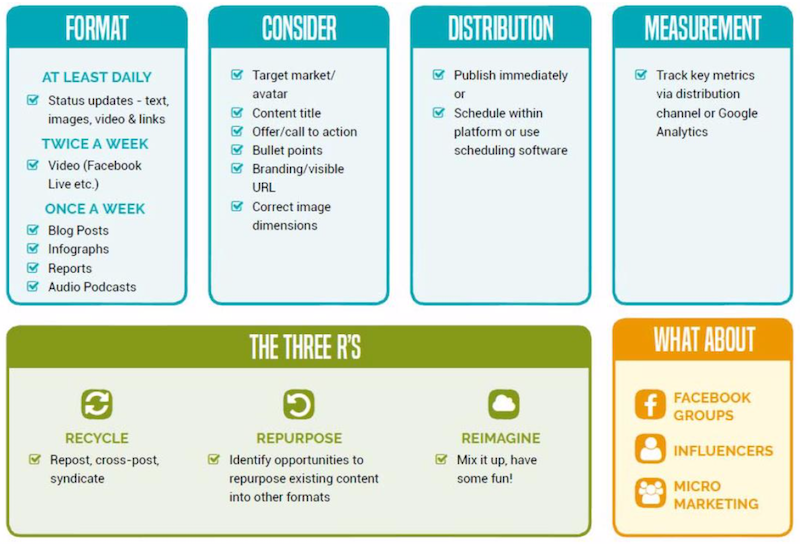
Social Media Metrics Map
You can use this map to map out your social strategy and align it to the impact on your business. This map is a really good reference to consider your target audience and what you want to achieve with them and what type of posts you can use.
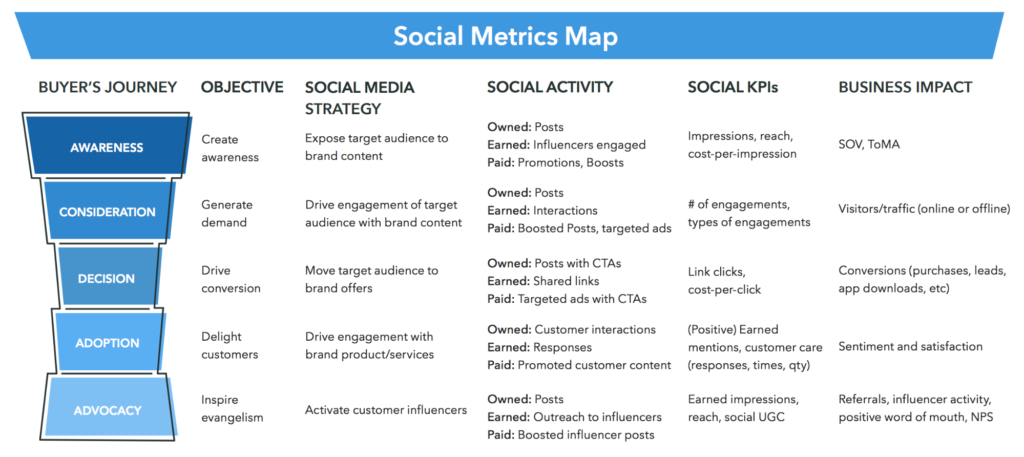
Writing for Social Media – Creating a Tone
What tone – how do we want to come across in a website. This establishes consistency and the sense of human to human contact. It gives a particular personality to your site. This is the social media brand voice, that can be shared across any team that is inputting together into social media and website channels.
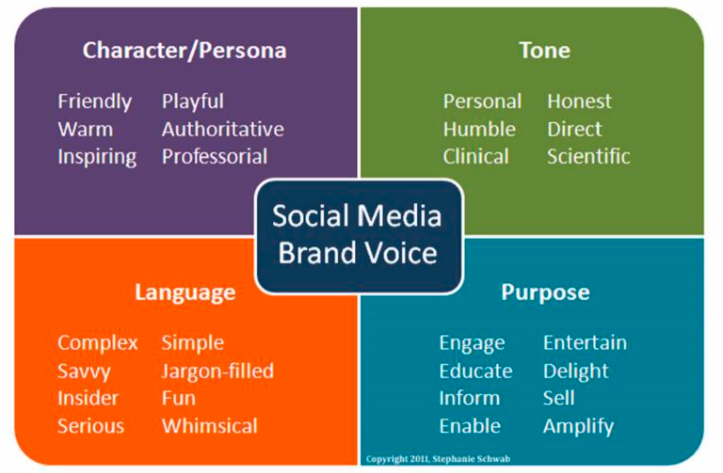
Finding your social media voice, if your social media channel was a person:
- What sort of personality would it have?
- What’s their relationship to the stakeholder? (coach, friend, teacher, inappropriate uncle?)
- How do you want your stakeholders to think about your sites and the people and organisations behind them?
It’s a busy space with a lot of options
This diagram shows the range of different options to use as part of an engagement strategy with your target audience and bear in mind, it is a constantly changing space. That is, it is a very dynamic, evolving and exciting space to explore engagement options within.
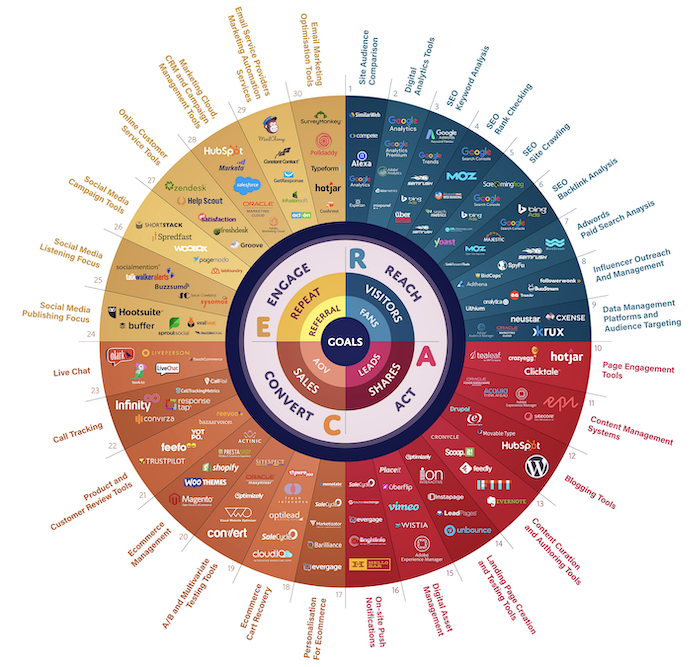
What has been working for engagement via LinkedIn and what makes for an engaging post? Here as some tips:
- Start your post with Today….
- Use photos of people. This one is an example of one that was professionally taken for the Food Innovation Network
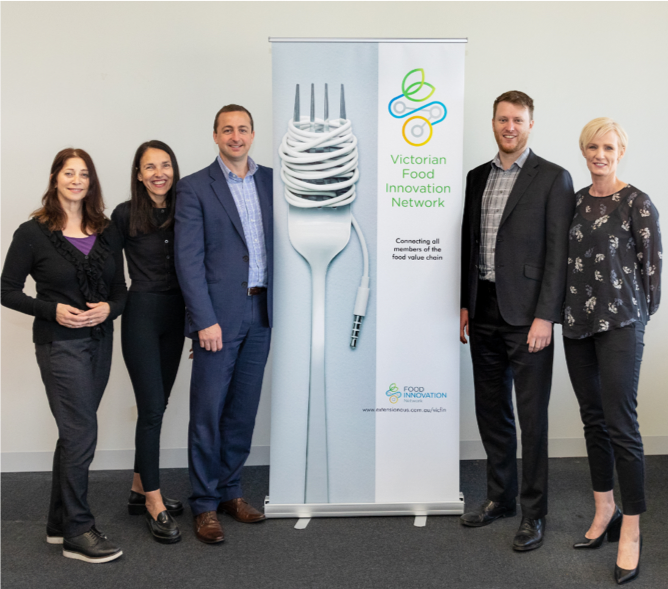
- Use an @name to ensure a post comes up in someone’s feed
- Use #key word to be discoverable
- Reply to all the comments that come through on your post
Here are some articles by Sue Ellson on LinkedIn on engagement with LinkedIn:
- 20 ways to encourage a LinkedIn post to go viral https://www.linkedin.com/pulse/20-ways-encourage-linkedin-post-go-viral-sue-ellson
- Primary and secondary key words for LinkedIn https://www.linkedin.com/pulse/linkedin-keywords-what-primary-secondary-should-you-sue-ellson
Using “Buffer”
Buffer is an application that can be used to schedule social media posts to a range of social media platforms, analyse the results of posts and better engage with a target audience. It helps save time by doing the posting for you at the times that you want. www.buffer.com
Facebook is constantly changing, here are some features you could consider using with some examples:
- Facebook Live https://www.facebook.com/marismith/
- Facebook live streaming app https://www.facebook.com/BeLiveTvApp
- Use demonstration https://www.facebook.com/ekoWorx/
- Bring it to life https://www.facebook.com/BabajisKitchen
- Facebook contests: Check the promotional guidelines: https://www.facebook.com/page_guidelines.php#promotionsguidelines. Make sure you follow Australian legislation.
Some sources of information on using Instagram:
- Boomerang – https://www.youtube.com/watch?v=OdxmjlqghtU
- Hyperlapse https://www.youtube.com/watch?v=bWLkv0z-sOE
- Layout – use the rule of thirds for your images
Instagram Live is a handy feature:
- It can be used to launch a new product or make a big announcement
- You can show the behind-the-scene look at what happens at your office/factory/farm.
- You can do a live Q&A with your audience
- You can hold a live chat about major changes in your company/industry.
Some points on Twitter
- Twitter is a great application for engagement and sharing information and content and linking through to sources of more detail
- You can invite interaction with your target audience
- It is good for promotion of events or for directing people to information or other engagement opportunities
- You can ask questions of your audience/followers
Twitter chats:
- Twitter chats are a useful feature to engage with a target audience
- It is a key specifically timed conversation on Twitter that is organised around a particular hashtag
- A moderator posts questions at that point in time and people engaged in the chat can answer them
YouTube
Some points on YouTube
- Is a great place for housing content
- A video can provide a lot of information in a short period of time
- YouTube as a platform has an enormous amount of engagement
- Videos need to be short and engaging. Here is an article on why use video and on taking great video with your phone
- Having a YouTube channel is not onerous, it is like have a Facebook page or Twitter account
- You can share other people’s videos to your target audience
Sources and further information
RMIT short courses on social media, click here.
Sue Ellson is an independent specialist in LinkedIn who also presents RMIT courses. www.sueellson.com
Ways of keeping up to date:
- The Fetch http://wp.me/1AQhE @thefetch
- Anthill http://anthillonline.com/ @AnthillMagazine
- Smart Company http://www.smartcompany.com.au/ @SmartCompany
- Frankie http://www.frankie.com.au/
- AustralianInfront https://www.researchgate.net/publication/317431313_Triggering_system_innovation_in_agricultural_innovation_systems_Initial_insights_from_a_community_for_change_in_New_Zealand
- Medium – Social Media Marketing https://medium.com/tag/social-media-marketing
- PR Warrior http://www.prwarrior.com/ @prwarrior
- Mumbrella http://mumbrella.com.au/ @mumbrella
- The Sense Network https://senseworldwide.com/the-sense-network/
- Mashable – Social Media http://mashable.com/social-media/
- TechCrunch – Social http://techcrunch.com/social/
- Content Marketing Institute http://contentmarketinginstitute.com/ @cmicontent
- Buffer Social Media Marketing Blog https://blog.bufferapp.com/
- Landing a job in social media http://mashable.com/2011/12/18/4-social-mediajob- tips/

